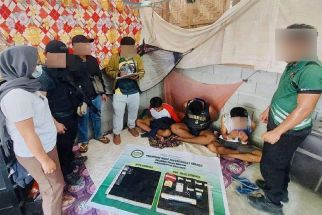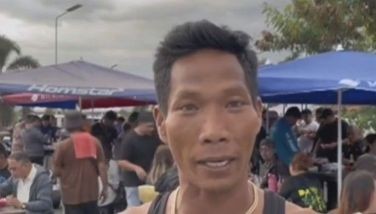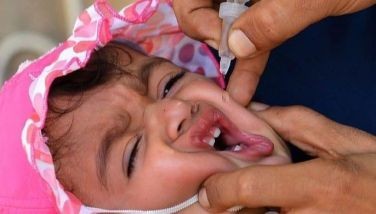Draco rizali and other lesser known facts about Rizal
June 19, 2003 | 12:00am
Did you know that Dr. Jose Rizal, whose 142nd birthday the country marks today, played a key role in the identification of the Philippine snail that harbors the parasite that causes schistosomiasis, a deadly disease plaguing some areas in Eastern Visayas?
That a flying lizard (Draco rizali), a frog (Rachophorus rizali) and a beetle (Apogonia rizali) had been named in honor of him?
That he also held degrees in land surveying and agriculture? And that he dabbled in geography?
These are some of the lesser known facets of the life of Rizal, the foremost Filipino patriot who was born in Calamba (now a city) on June 19, 1861.
"Dr. Rizal was not a scientist by accident," states a paper titled "Rizal’s Contribution to Science and Technology."
The paper is one in a compendium of professional papers published by the Philippine Council for Agriculture, Forestry and Natural Resources Research and Development (PCARRD).
The Los Baños-based PCARRD, currently headed by executive director Patricio Faylon, is the sectoral planning body of the Department of Science and Technology (DOST) that coordinates, evaluates and monitors agriculture, forestry and natural resources research and development in the country.
Education and science and technology, the paper notes, were the means Rizal had intended to use to lift the Filipinos from the quagmire of poverty and ignorance.
As he intimated to his Austrian friend, Prof. Ferdinand Blumentritt, in a letter in 1890, "I have a big library. I shall have a house built on a hill. Then I shall dedicate myself to the sciences."
In Dapitan (also now a city), Rizal gave full vent to his scientific expertise. "Under modern judgment, what he did in Dapitan turned out to be practical expressions of integrated development programs in agriculture, ecology and public health," the paper states.
Also while in exile, he re-established connection with his scientist-friends.
He submitted to the Dresden Museum specimens of reptiles, mammals, birds, fish, insects, crustaceans and other invertebrates. For this, he was recognized as a zoologist, leading to the naming of a flying lizard, a frog and a beetle after him.
He also sent shells to Dr. A.B. Meyer, director of the Royal Saxony Ethnographical Institute, in exchange for much-needed books.
Less known is the fact that the Philippine snail which harbors the parasite that causes schistosomiasis is known as Oncomelania cuadrasi, named after a certain Mr. Cuadrasi to whom Rizal sent his specimens of insects and animals for identification. Cuadrasi was a known naturalist in Manila and the origin of the Philippine snail was Dapitan.
The PCARRD paper notes: "Rizal was a respected member of the Anthropological and Ethnological Society of Berlin and the Geographic Society of Berlin. This membership in science organizations also provided the line of exchange of information that (supported) Dr. Rizal’s medical practice and the technological need of his varied projects."
His study of ophthalmological medicine had been thorough. His mother, who lost her eyesight in 1887, encouraged him to take further training in ophthalmology. Thus, even after he finished his doctorate in medicine at the University of Madrid in 1885, he traveled to other countries and trained under well-known practitioners in ophthalmology.
He trained in Paris in 1885 under Dr. Louis de Wecker, a famous eye surgeon who, as Rizal wrote to his parents in 1886, "can set in position crossed-eyes in two minutes."
In 1892, Rizal successfully removed the cataract in his mother’s left eye in Hong Kong and from her right eye two years later, in Dapitan.
In Dapitan where he was exiled from 1892 to 1896, Rizal practiced ophthalmology and medicine as he had earlier done in Hong Kong. His patients grew in number that he had to put up small hospital houses around his house. His patients came from as far as Iloilo, Cebu, Manila and Hong Kong.
Less known about him is that he had a degree in land surveying and a Bachelor of Agriculture degree from Ateneo Municipal before he enrolled at the Central University of Madrid.
Being a scion of a landed family in Calamba, Rizal understood large-scale farming. Thus, not satisfied with the small size of the land he had acquired from the government for his farm activities in Dapitan, he bought 16 hectares more of neglected land from various owners.
In just half a year he had planted 5,000 pineapples and 1,400 coffee and 200 cacao trees on the land. Later, he purchased more land which he planted to abaca and corn.
He also organized Dapitan’s first association of farmers primarily to improve their farm produce and to help them find better markets. At one instance, he sold abaca fiber himself in Manila to study its prices.
"The Philippines of Rizal’s time was agricultural and he knew that if his country were to prosper economically, idle lands must be rapidly transformed into productive ones," the PCARRD paper states.
That a flying lizard (Draco rizali), a frog (Rachophorus rizali) and a beetle (Apogonia rizali) had been named in honor of him?
That he also held degrees in land surveying and agriculture? And that he dabbled in geography?
These are some of the lesser known facets of the life of Rizal, the foremost Filipino patriot who was born in Calamba (now a city) on June 19, 1861.
"Dr. Rizal was not a scientist by accident," states a paper titled "Rizal’s Contribution to Science and Technology."
The paper is one in a compendium of professional papers published by the Philippine Council for Agriculture, Forestry and Natural Resources Research and Development (PCARRD).
The Los Baños-based PCARRD, currently headed by executive director Patricio Faylon, is the sectoral planning body of the Department of Science and Technology (DOST) that coordinates, evaluates and monitors agriculture, forestry and natural resources research and development in the country.
Education and science and technology, the paper notes, were the means Rizal had intended to use to lift the Filipinos from the quagmire of poverty and ignorance.
In Dapitan (also now a city), Rizal gave full vent to his scientific expertise. "Under modern judgment, what he did in Dapitan turned out to be practical expressions of integrated development programs in agriculture, ecology and public health," the paper states.
Also while in exile, he re-established connection with his scientist-friends.
He submitted to the Dresden Museum specimens of reptiles, mammals, birds, fish, insects, crustaceans and other invertebrates. For this, he was recognized as a zoologist, leading to the naming of a flying lizard, a frog and a beetle after him.
He also sent shells to Dr. A.B. Meyer, director of the Royal Saxony Ethnographical Institute, in exchange for much-needed books.
Less known is the fact that the Philippine snail which harbors the parasite that causes schistosomiasis is known as Oncomelania cuadrasi, named after a certain Mr. Cuadrasi to whom Rizal sent his specimens of insects and animals for identification. Cuadrasi was a known naturalist in Manila and the origin of the Philippine snail was Dapitan.
The PCARRD paper notes: "Rizal was a respected member of the Anthropological and Ethnological Society of Berlin and the Geographic Society of Berlin. This membership in science organizations also provided the line of exchange of information that (supported) Dr. Rizal’s medical practice and the technological need of his varied projects."
He trained in Paris in 1885 under Dr. Louis de Wecker, a famous eye surgeon who, as Rizal wrote to his parents in 1886, "can set in position crossed-eyes in two minutes."
In 1892, Rizal successfully removed the cataract in his mother’s left eye in Hong Kong and from her right eye two years later, in Dapitan.
In Dapitan where he was exiled from 1892 to 1896, Rizal practiced ophthalmology and medicine as he had earlier done in Hong Kong. His patients grew in number that he had to put up small hospital houses around his house. His patients came from as far as Iloilo, Cebu, Manila and Hong Kong.
Less known about him is that he had a degree in land surveying and a Bachelor of Agriculture degree from Ateneo Municipal before he enrolled at the Central University of Madrid.
Being a scion of a landed family in Calamba, Rizal understood large-scale farming. Thus, not satisfied with the small size of the land he had acquired from the government for his farm activities in Dapitan, he bought 16 hectares more of neglected land from various owners.
In just half a year he had planted 5,000 pineapples and 1,400 coffee and 200 cacao trees on the land. Later, he purchased more land which he planted to abaca and corn.
He also organized Dapitan’s first association of farmers primarily to improve their farm produce and to help them find better markets. At one instance, he sold abaca fiber himself in Manila to study its prices.
"The Philippines of Rizal’s time was agricultural and he knew that if his country were to prosper economically, idle lands must be rapidly transformed into productive ones," the PCARRD paper states.
BrandSpace Articles
<
>
- Latest
- Trending
Trending
Latest
Trending
Latest
Recommended


























